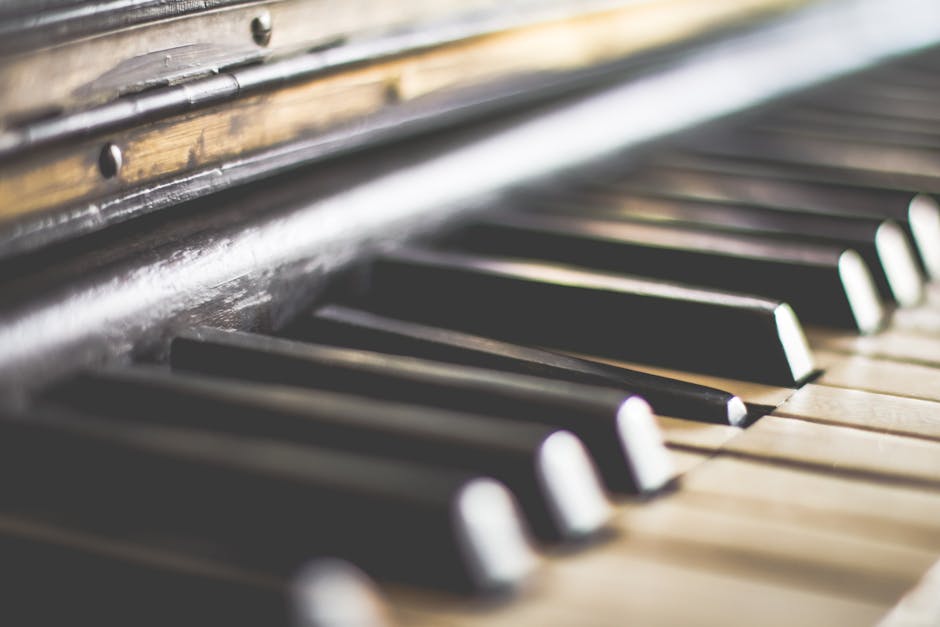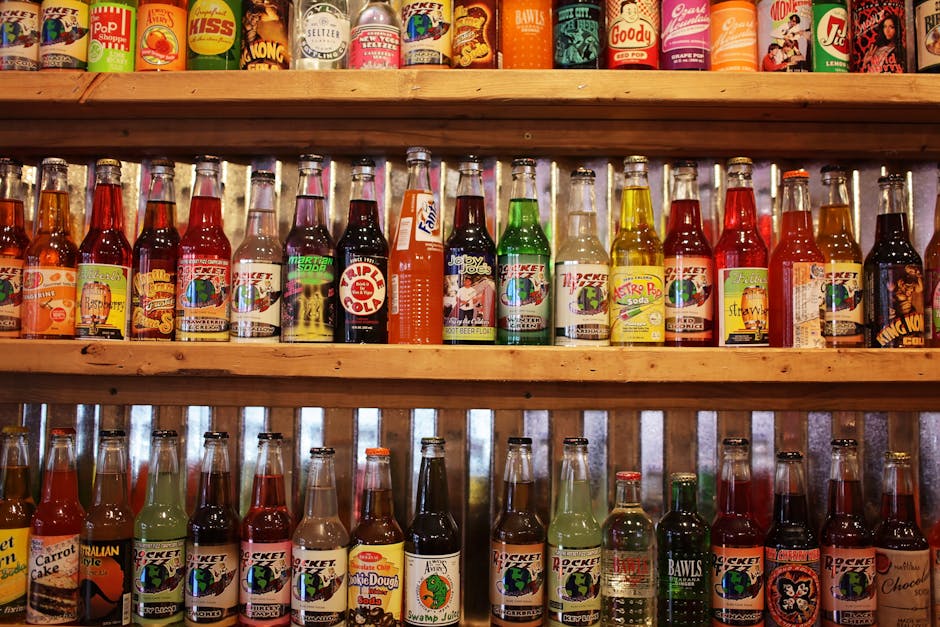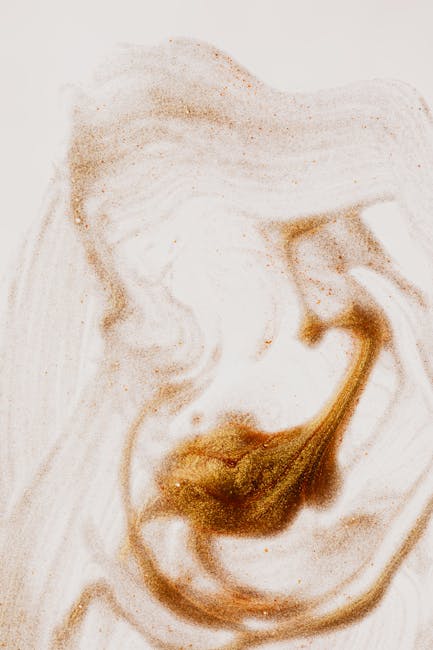Welcome to the magical world of music, where chord progressions reign supreme and melodies dance like glittering unicorns in a field of harmony. In this article, we will explore the wizardry behind unlocking musical brilliance through the power of chord progressions. So grab your imaginary cape, tune up your air guitar, and get ready to embark on a journey through the whimsical realms of musical genius. Let’s dive in and discover the secrets to crafting captivating tunes that will have you feeling like a rock star in no time!
Contents
- 1 Understanding the Foundation: The Role of Chord Progressions in Music Composition
- 2 Exploring the Basics: Major and Minor Chord Progressions
- 3 Crafting Emotional Responses: How Chord Changes Influence Music’s Mood
- 4 Beyond the Basics: Advanced Chord Structures and Their Creative Potential
- 5 The Science Behind the Sound: Psychological Effects of Chord Progressions
- 6 Famous Examples and Their Impact: Analyzing Classic Chord Progressions in Popular Music
- 7 Tools and Techniques for Mastery: Enhancing Your Music with Effective Chord Progressions
- 8 FAQs
- 9 Time to Tune Your Ears and Unleash Your Inner Rockstar!
Understanding the Foundation: The Role of Chord Progressions in Music Composition
When it comes to music composition, chord progressions are like the ingredients in a recipe – they provide the backbone and structure for a song. Think of them as the building blocks that hold the whole piece together, much like a sturdy foundation for a house. Without a solid chord progression, a song can easily fall flat, much like a poorly constructed building.
So what exactly are chord progressions? Well, they are a series of chords played in a specific order that create a sense of harmonic movement within a song. Each chord in a progression has a distinct sound and feeling, and the way they flow from one to the next can evoke different emotions and moods in the listener.
Just like a good joke has a setup and a punchline, a well-crafted chord progression follows a similar pattern. It sets the stage with an opening chord, builds tension with a series of chords that lead to a climax, and resolves that tension with a final chord that brings everything full circle. It’s like telling a musical story with a beginning, middle, and end.
So next time you’re listening to your favorite song, pay attention to the chord progressions and how they enhance the overall composition. You’ll start to notice how these seemingly simple combinations of notes can have a huge impact on the way a piece of music makes you feel. And who knows, maybe you’ll even be inspired to try your hand at crafting your own chord progressions!

Exploring the Basics: Major and Minor Chord Progressions
So you want to dive into the world of major and minor chord progressions, huh? Get ready to explore the building blocks of music and spice up your playing with some juicy harmonies!
First things first, let’s talk about major chords. These bad boys are like the cheerleaders of the chord world – bright, happy, and full of sunshine. They’re made up of a root note, a major third, and a perfect fifth. So if you want to spread some positivity in your music, sprinkle in some major chords like confetti at a parade!
Now, on to minor chords. These guys are like the edgy rebels hanging out in the back of the chord party. They’re made up of a root note, a minor third, and a perfect fifth. Minor chords bring that touch of melancholy and drama to your music, perfect for when you want to add a little extra spice to your sound.
Once you’ve got the hang of major and minor chords, it’s time to start mixing and matching them in progressions. Experiment with different combinations, throw in some seventh chords for extra flavor, and before you know it, you’ll be creating your own groovy chord sequences like a seasoned pro. So grab your guitar, piano, or whatever instrument tickles your fancy, and get ready to explore the vast, wondrous world of major and minor chord progressions!

Crafting Emotional Responses: How Chord Changes Influence Music’s Mood
Have you ever wondered why certain songs make you feel like dancing, while others make you want to cry into your pillow? It all comes down to those sneaky little chord changes that musicians use to manipulate our emotions like puppet masters. Yes, believe it or not, music has the power to control our feelings and make us do things we never thought possible.
Picture this: you’re sitting in your favorite coffee shop, sipping on a latte and tapping your foot to a catchy tune. Suddenly, the chord changes and BAM! You’re transported to a melancholy place where all you can think about is the one who got away. You start reminiscing about past loves and wondering where it all went wrong. That’s the magic of chord changes, folks.
But fear not, dear readers, for not all chord changes are out to break your heart. Some are here to lift you up and make you feel like you’re soaring through the clouds on the back of a majestic unicorn. These are the chord changes that bring a smile to your face and a pep in your step. So next time you’re feeling down, just crank up that uplifting melody and let those chords work their magic.
So there you have it, folks. The secret weapon that musicians use to tug at our heartstrings and make us feel all the feels. Next time you listen to your favorite song, pay close attention to those chord changes and see if you can pinpoint exactly how they’re influencing your mood. Who knows, you might just discover a whole new appreciation for the power of music.

Beyond the Basics: Advanced Chord Structures and Their Creative Potential
So you’ve mastered your basic chords and now you’re ready to dive into the wild world of advanced chord structures. Buckle up, because things are about to get funky!
Ever wonder why some songs just have that extra “oomph” to them? It’s all in the chords, baby. With advanced chord structures, you can take your music to a whole new level and impress even the toughest critics. Say goodbye to boring old triads and hello to a world of possibilities!
With advanced chord structures, you’ll have the power to create rich, complex harmonies that will make your listeners’ jaws drop. Think outside the box and experiment with unconventional chord progressions. Mix it up, break the rules, and watch as your music takes on a life of its own.
Don’t be afraid to get weird with it. Embrace dissonance, embrace tension, embrace the unexpected. The more you push the boundaries of traditional chord structures, the more you’ll surprise yourself (and your audience). So go forth, fearless musician, and unleash the creative potential of advanced chord structures!

The Science Behind the Sound: Psychological Effects of Chord Progressions
Ever wonder why certain songs make you feel happy, sad, or ready to conquer the world? It all comes down to the science behind chord progressions. One chord progression may leave you feeling joyous and upbeat, while another may have you reaching for a box of tissues. Let’s dive into the fascinating world of music psychology and explore how different chord progressions evoke different emotions.
- Major vs. Minor: The age-old battle of major vs. minor chords. Major chords are like a sunny day at the beach - they’re bright, cheery, and make you want to dance. Minor chords, on the other hand, are more like a rainy day – they can bring out feelings of melancholy, nostalgia, or even a touch of drama.
- Tension and Release: One trick that songwriters use to create emotional impact is the concept of tension and release. By building tension through dissonant chord progressions and then resolving it with a sweet, sweet resolution, they can take you on a musical rollercoaster ride that tugs at your heartstrings.
But wait, there’s more! Did you know that even the order of chords in a progression can impact how you feel? For example, the classic I-IV-V progression is a tried and true formula for creating a sense of resolution and stability, while a ii-V-I progression can add some spice and tension to keep things interesting. So next time you find yourself getting emotional over a song, just remember – it’s all in the chords.
Famous Examples and Their Impact: Analyzing Classic Chord Progressions in Popular Music
Let’s dive into some iconic chord progressions in popular music that have stood the test of time and left a lasting impact on listeners worldwide. These classic examples have influenced countless musicians and continue to be celebrated for their innovation and effectiveness.
One standout example is the timeless I-vi-IV-V progression, famously used in songs like ”Stand By Me” by Ben E. King and “Let It Be” by The Beatles. This simple yet powerful sequence of chords has a knack for tugging at heartstrings and creating a sense of nostalgia for listeners of all ages. It’s no wonder why it has become a staple in the songwriting arsenal of musicians across genres.
Another legendary progression is the vi-IV-I-V, found in hits like “Wonderwall” by Oasis and “With or Without You” by U2. This sequence has a way of building tension and drama, leading to a satisfying resolution that keeps listeners coming back for more. The emotional impact of these chords is undeniable, making them a favorite among songwriters looking to create a memorable hook.
And let’s not forget about the classic I-IV-V-I progression, commonly heard in blues and rock ‘n’ roll music. This tried-and-true sequence has been used in countless hits, from “Johnny B. Goode” by Chuck Berry to ”Twist and Shout” by The Isley Brothers. Its infectious energy and feel-good vibes have solidified its place as a go-to choice for musicians looking to get audiences on their feet and dancing the night away.
Tools and Techniques for Mastery: Enhancing Your Music with Effective Chord Progressions
So you’re ready to take your music to the next level with some killer chord progressions, huh? Well, you’ve come to the right place! Let’s dive into some tools and techniques that will have you crafting mind-blowing melodies in no time.
First up, let’s talk about chord voicings. Experiment with different inversions and voicings of the same chord to add depth and complexity to your progressions. Trust me, your listeners will thank you for it!
Next, consider modal interchange. Mixing and matching chords from different modes can spice up your progressions and add an unexpected twist. It’s like adding a pinch of paprika to your musical stew – delicious!
And don’t forget about secondary dominants! These bad boys can add tension and resolution to your progressions, giving your music that extra oomph. Plus, they sound super fancy, so you’ll look like a musical genius in front of your peers. Win-win!
FAQs
Why are chord progressions important in music?
Well, think of chord progressions as the magical ingredients that make up the recipe for a delicious musical feast. They provide the structure, harmony, and emotional depth that can turn a catchy tune into a timeless masterpiece.
How do chord progressions enhance a song?
Imagine a song without chord progressions like a cake without frosting – sure, it might be tasty, but it’s missing that extra layer of sweetness and flair that takes it to the next level. Chord progressions add complexity, tension, and resolution, creating a dynamic journey for the listener to embark on.
Can anyone create compelling chord progressions?
Absolutely! You don’t need to be a musical genius to whip up some killer chord progressions. With a bit of experimentation, a dash of creativity, and a sprinkle of inspiration, anyone can unlock the musical brilliance hidden within chord progressions.
How can I spice up my chord progressions?
Try throwing in some unexpected chords, mixing up the order, or adding in some fancy embellishments. Think of it as adding a pinch of paprika or a splash of hot sauce to give your chord progressions that extra kick.
What are some classic chord progressions that never fail?
Ah, the tried and true classics! The I-IV-V progression, the ii-V-I turnaround, and the hauntingly beautiful vi-IV-I-V progression are just a few examples of chord progressions that have stood the test of time. Trust in these gems, and you can’t go wrong.
Time to Tune Your Ears and Unleash Your Inner Rockstar!
Congratulations! You’ve now been armed with the secret weapon of chord progressions to unlock your musical brilliance. No longer will you be stuck playing the same three chords over and over again. It’s time to mix things up, get creative, and show the world what you’re made of!
So grab your guitar, piano, or ukulele, and start experimenting with different chord progressions. Who knows, you might just stumble upon the next chart-topping hit. Remember, the power of music is in your hands – now go out there and rock on!



